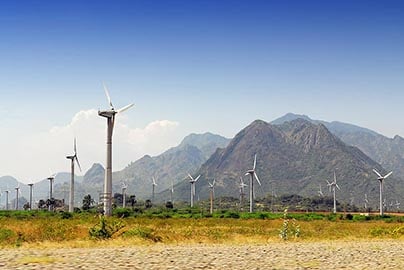Future proofing the Indian Economy…How does it get from here?
For 2000 years India was the world’s largest and most successful economy, until the rictus of the industrial revolution shifted power to the West, leaving the subcontinent to be “policed” by blue coated thugs from the East India Company, and Civil Service Mandarins half a world away in Whitehall: India was left in thrall to the mother country for two hundred years…but, of course, nothing lasts forever. Two thousand years of economic primacy aren’t so easily erased, and the Leviathan was only sleeping. Since the new Millennium dawned, India’s economy has reverted to type: growing by an average of 6.5% year on year from 2000, and by 2019 (when COVID changed the rulebook), it had once again become the fastest growing large economy on the planet, now poised to leap forward as lockdown restrictions are eased. But what is it exactly about India that makes it so special, and how will that leap forward be achieved?
The answer, of course, is far more complicated than any crude set of historic vignettes, even if they do stretch back two thousand years, the thugs in blue have long since sailed for home: as India builds a brighter future, it’s economic model for the New Millennium depends on three key ingredients, each combining to deliver a compelling advantage over other developing, emerging and established economies across the globe.
-
Febrile Demographics
First of all, the subcontinent has one of the youngest populations in the world, with a correspondingly low dependency ratio: so where, for example, the United Kingdom and the United States are facing increasing challenges posed by aging populations (fewer working to support more who don’t), 50% of the subcontinent’s citizens are currently under 25 years old, and 65% are younger than 35, so in a world weary way (think how quickly the average teenager can spend £100), that means India will inevitably have a far higher demand propensity than most developed (and ageing) economies…and increased demand means sustainable growth: which explains why 60% of the subcontinent’s GDP is currently driven by private consumption (www.weforum.org).
This has turned India into the world’s sixth biggest consumer market, with the world’s third largest concentration of billionaires: one hundred and forty to be exact, according to Forbes Magazine (www.forbes.com), highlighting further the demand pull imperative of an increasingly wealthy, increasingly urbanised and increasingly aspirational population.
By definition, a younger population is also more productive (for longer) than an aging demographic, so its easy to see why India’s current growth trajectories aren’t likely to be slowing down any time soon: in fact they’re accelerating as a natural consequence of what is still the fastest growing population on the planet, exponentially replenishing the subcontinent’s powerbase for the foreseeable future.
-
Future Proofing Investment
On the flip side of the coin, India also a structurally high level of gross domestic savings, and although this vital indicator reached a fifteen year low at the end of 2020, it was still running at 31.4%: more than double the United Kingdom’s desultory 14.7% (www.ceicdata.com), and providing further proof, if proof be needed, that the average Indian is much less likely to reach for their credit card and far less likely to empty their bank account at the end of each month. Indeed, the UK Household Saving Ratio is projected to dip to an appalling 7% this year (despite the impact of lockdowns on spending options).
So why does all that matter?
Well, at a critical level, these savings ratios are an important barometer of private sector investment resources, an essential tool in future proofing economic growth: higher ratios tend to point to more private sector funding being available for forward looking commercial ventures and infrastructure projects, and that’s of major importance for any modern (mixed) economy where governments can’t be relied on to take up all the heavy lifting. Long term GDP growth requires a high savings ratio, and India has that in spades.
-
Global Connectivity
And finally, of course, global connectivity is a matter of paramount importance for any modern economy: if COVID taught us nothing else, it painfully demonstrated just how connected we all are, as well as the disastrous consequences of international supply chains faltering or breaking down. So any intelligent evaluation of the future potential of individual economies simply has to take into account their ability to get connected, and stay connected.
On that front too, India ticks all the boxes.
Since its economy was first liberalised in 1991 (moving from a narrow command based structure), but more particularly since the raft of reform measures introduced by Prime Minister Modi’s Government over the past decade, India has established itself as a global distribution and industrial hub, with commercial monoliths such as Amazon, Apple and Boeing all beating a path to its door, taking advantage of centres of technical excellence such as Bangalore and Chennai: not to mention continued major inward investment from Japanese and Chinese corporates.
There’s no need to reflect on past glories…India’s eyes are set squarely on the future.
Executive Overview
It’s interesting to watch global economies adapt and revert to the certainties that held for so long before the industrial revolution changed everything: more interesting still, of course, to assess how well equipped they are to cope with the future.
Invest in Red Ribbon Asset Management

Red Ribbon is committed to identifying and building on investment opportunities that are fully in compliance with its core Planet, People, Profit policy: not only offering above market rate returns for investors but also protecting our Natural Capital.

.jpg)

.jpg?width=150&height=150&name=shutterstock_617032220%20(1).jpg)
.jpg?width=150&height=150&name=shutterstock_755656525%20(1).jpg)



Leave a Reply